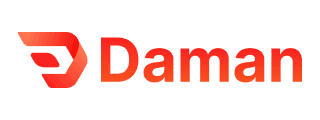 Local SEO Boost – Put Your Business on the Local Map!
Local SEO Boost – Put Your Business on the Local Map!
How IoT Is Making Parking More Convenient, Efficient, and Sustainable
Written by getslot » Updated on: June 17th, 2025

In all the cities that exist across the globe, parking has emerged as an ever-increasing problem. Both roads in urban centres are congested, and drivers spend much of their time going round roundabouts in search of a vacant parking lot. The resultant frustration over such a situation adds to the emission of bad air and unnecessary carbon emissions. Many current approaches in IOT Smart parking management and control can be described as deprecated, ineffective, and poorly integrated into the wider urban environment. However, there is a new concept that is gradually gaining popularity and is likely to bring a radical shift in this regard, and this is the Internet of Things (IoT).
Internet of Things or IoT is the presence of physical and connected devices that contain sensors and software that allow them to connect to the internet; this has brought about a revolution in the way parking as a service is currently being considered. IoT elements facilitate data retrieval in real-time, manage parking lot efficiency, control traffic density, and promote environmental conservation. Thus, the following article will explain how IoT is having a great impact in making parking easier, smart, and eco-friendly to enhance the use of cars and better the structure and design of cities.
1. Convenience: Real-Time Parking Availability
Sometimes, the most important advantages of IoT in parking are only seen by drivers, and these include the flexibility it offers. In the past, identifying an available parking space in a busy urban area was quite a hassle and consumed a lot of time. There are always many drivers driving around parking lots or around the streets for very long times to look for parking spaces. This is made worse by badly managed parking systems, which do not provide any useful information regarding parking space availability at any given instance.
How IoT Helps:
Smart parking systems utilize sensors that are installed in parking lots to ensure that they can measure whether or not the particular location is occupied. These sensors are linked to a central software platform that analyzes and disseminates data to the user through an app or by the LED screens installed in the city. This makes it possible for drivers to get information on parking areas and, therefore, no longer need to wander in search of parking.
Impact on Convenience:
Real-Time Parking Guidance: Using IoT systems, the drivers can opt to use their smart application or in-car systems to locate available parking lots in real-time. This eliminates the need to constantly check frequently as the system updates every few seconds to meet actual-time conditions, thereby increasing ease in parking and reducing stress.
Reservations and Payments: Some IoT parking systems provide an option to pay for parking in advance based on the parking zone that is being requested. This eradicates the guessing game when one is seeking a place to park in as they are not certain if the place is available or not. Also, most systems are coupled with the payment methods so that customers can pay for the parking through the application.
Example:
Urban places such as San Francisco, Los Angeles already have IoT sensors placed to assist drivers in locating empty parking lots. The smart parking system in these cities helps drivers save a considerable amount of their precious time in hunting for a parking lot, thus enhancing mobility and reducing the instances of irritation.
2. Efficiency: Optimizing Space and Traffic Flow
Another area where IoT is playing a crucial role is in the operational efficiency of parking services. If not well utilized, parking lots are underutilized, and movement in parking spaces and their surrounding areas is congested, especially in the peak periods. It is many times organized haphazardly throughout some of the cities, which in turn enhances the wasted spaces, wastage of time, and increased traffic jams.
How IoT Helps:
IoT technology can help improve the utilization of parking spaces as it will give information on which parking spaces are available, which are occupied, and when a particular parking space will be free. This implies that IoT systems can independently capture the parking lot or street and make changes based on the required need.
Impact on Efficiency:
Better Space Utilization: With the IoT parking system, the drivers can be guided to the AS spaces that have been utilized most efficiently, thus no space is left idle for too long. For instance, in a large parking garage, Internet of Things services like direct drivers to the nearest available spot rather than forcing them to search for one.
Lessened Congestion: There is a phenomenon that persistently contributes to congestion on our city roads known as circling, where vehicles spend much time in roundabouts and parking lots. It lowers this through offering real-time directions, appropriate traffic flow, and the time needed by drivers in search of parking spaces.
Example:
One of the pilot projects that we have already applied is the IoT smart parking which Barcelona is one of the leading cities in the world in smart city technology for parking control and monitoring of parking spaces in real-time. The system is effective in directing clients to open parking spaces for their cars, hence minimizing unnecessary accumulation of cars in certain areas or point in time. This has ensured that the flow of people on the streets is controlled and enhanced the condition of navigation for cars and people on foot.
3. Sustainability: Reducing Emissions and Energy Consumption
In these aspects, there are several advantages attributable to the use of IoT in the parking environment. Stagnation and moving at snail speed searching for an empty parking space also produces many greenhouse gas emissions. It is not only time-wasting but also leads to an increase in the air pollution problem in cities.
How IoT Helps:
With the help of Internet of Things technology, the rate of movement due to searching for a parking space is greatly minimized because the availability is relayed to the drivers instantly. On the same note, the smart parking solutions also result in the reduction of the number of vehicles on the road, therefore reducing emissions and pollution of the environment.
Impact on Sustainability:
Fewer Emissions: Parking space availability that does not require the car to circle for a long time reduces the emission levels. This is beneficial in achieving cleaner air and hence improving the quality of life within urban centers.
Smarter Urban Planning: IoT for parking systems essentially involves the accumulation of massive parking information, which may be useful for better city planning. This, in turn, assists in discouraging expansion of urban growth and increases the efficiency of densities, parking systems within urban settings to enhance sustainable development.
Example:
As observed through a case study in San Diego, smart parking has made drivers require less time searching for free spaces. As a direct result of the smart parking system, the amount of emission reduction can be reported, and the broader sustainability objective of the city has been achieved by encouraging parking only through greener means.
4. Cost Efficiency: Saving Resources and Money
Besides, IIoT-based systems have brought more effectiveness in parking with a considerable reduction of the overall costs of parking for the business organization and municipal agencies in charge of parking facilities. The conventional parking systems were usually machine-based, with the help of employees such as parking attendants or outdated sensors. IoT-based parking solutions are relatively cheaper for running costs as compared to the offline ones.
How IoT Helps:
The IoT parking systems thus involve the automation of numerous procedures linked with parking lots, including space checks, directions to free parking areas, and charging of fees. These systems have the added advantages of requiring fewer staff and enhancing workflow, thus achieving the reduction of cost.
Impact on Cost Efficiency:
Lower cost of operation: With the help of parking lots, consumers do not have to develop human attendants to monitor the available parking space or to collect fees. Due to the integration of IoT systems, most staffing and administrative costs have been brought down considerably.
Dynamic Pricing: With IoT parking systems, the rate of parking charges can be varied depending on the demand.. For instance, cost may rise during certain hours while it may be low the rest of the day to make maximum profit, yet keeping costs affordable for the consumer.
Example:
Some of the smart parking companies have put in place the IoT systems that facilitate this type of dynamic pricing, depending on the availability of space obtainable from an IoT-based DBMS system. For instance, during festivals or some other peak business moments or times, parking fees can be adjusted, hence correcting the rationing of parking space by client pressure.
5. Integration with Smart City Infrastructure
This paper calls for the identification of the current state of smart parking systems and IoT and their integration with other city structures, as cities are being transformed into smart cities. This results in integration, which brings about improved coordination in the planning of the city and improvement of the services offered in the city.
How IoT Helps:
IoT parking systems must also work with other elements of the smart city initiative, including public transportation systems, traffic systems, and power grids. Such integration makes it easy for citizens and achieves optimal utilization of resources for the military or any other security organization undertaking the administration of such programs.
Impact on Urban Mobility:
Interconnected Systems: The system of parking cars has not remained an isolated system. Smart parking systems interact directly with other smart city facilities like fluid traffic signals and merged transportation systems so that the overall traffic in the city is as fluid as possible.
Manpower Planning: Able to analyze traffic congestion on parking lots through the information collected by IoT systems; hence, permit the council to plan for future parking lots for reduced traffic jams and an enhanced transportation system.
Example:
Currently, the trend of smart cities is actively developing all around the world, including Singapore, where the government has launched the Smart Nation initiative; one of its applications is IoT-based parking systems connected with public transport, traffic management systems, and various smart infrastructures. This enables drivers to find space to park their cars conveniently before switching to mass transport means in the case of longer-distance travel.
6. The Future of IoT in Parking
Therefore, it should be considered that smart and IoT sensors are the future of parking. It is for this reason that with more development of IoT technology, more advancements are likely to be realized in the parking sector. Voice recognition and control for self-driving cars, to AI-driven parking lots that learn, among others, are quite unrealistic but possible.
How It Could Evolve:
Self-Parking: IoT and self-driving cars in the uncertain future may make it possible for vehicles to navigate to the available parking lot on their own and park on their own.
Smart Parking: Given that IoT stands for the Internet of Things, parking can also be made smart by using artificial intelligence to predict taxi demand and determine parking spots, prices, and availability.
Example:
In the future, this technology will be extended to communicate with other IoT-based parking systems so that Teslas will be able to park themselves in the nearest available parking space with no need to look for a parking lot manually.
Conclusion: A Smarter, Greener Future for Parking
At GetSlot, smart parking is a new concept that has brought a significant change in the parking system throughout the world with the help of IoT technology. By providing real-time parking information, maximizing the occupancy of the parking lots, and decreasing parking densities, Smart Parking IoT is set to revolutionize parking for drivers, businesses, and cities. With densely populated urban centers as well as continued advancements in technology, the use of IoT parking solutions will go a long way in ensuring that more efficient and sustainable, and better livable urban environments are developed.
Presently, the future of parking has emerged and taken the form of smart, sustainable, and efficient. Thus, using IoT, urban mobility will be enhanced, traffic jams will be solved, and cities will become eco-friendly places for living and working.
Note: IndiBlogHub features both user-submitted and editorial content. We do not verify third-party contributions. Read our Disclaimer and Privacy Policyfor details.
Copyright © 2019-2025 IndiBlogHub.com. All rights reserved. Hosted on DigitalOcean for fast, reliable performance.










